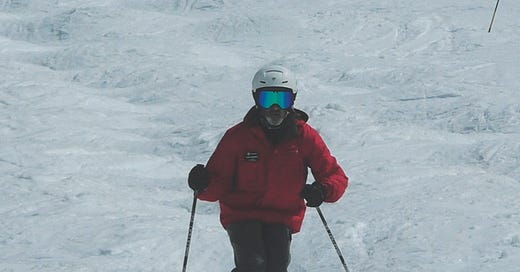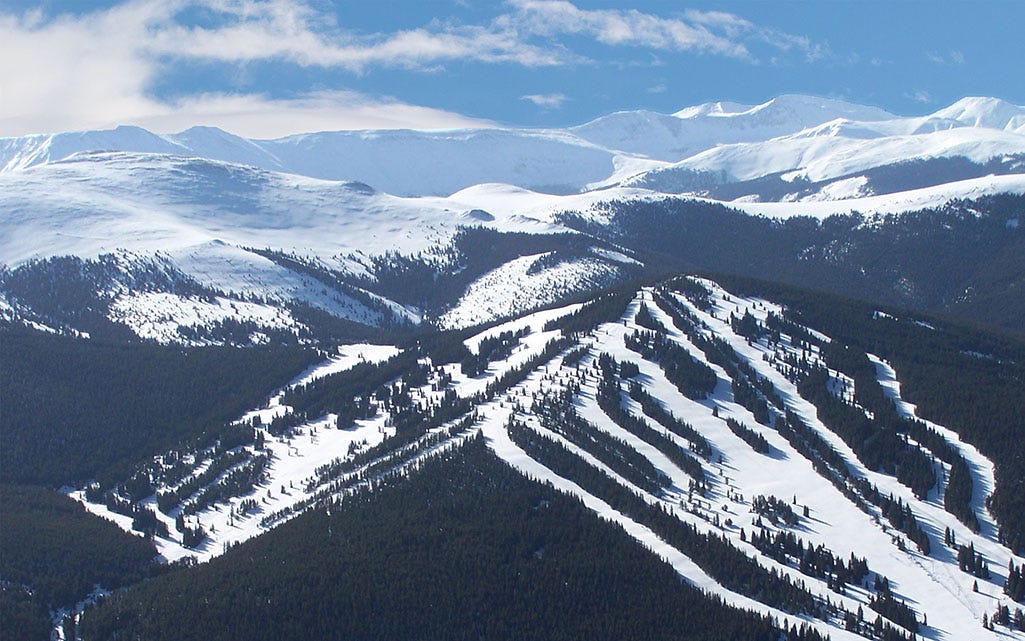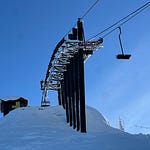The Storm Skiing Podcast is sponsored by Mountain Gazette - Listen to the podcast for discount codes on subscriptions and merch.
Who
Dan Torsell, President and General Manager of Ski Cooper, Colorado
Recorded on
October 18, 2021
Why I interviewed him
We’ve all seen the signs, westbound on I-70. Ski Cooper this way. Copper Mountain that way. And many of us have probably thought some version of “that’s funny, I wonder how many European tourists mix them up and show up at Ski Cooper with their Ikon Pass? Anyway, which way to the free lots at Copper?” And that’s as much as most of us have probably thought about the place.
It’s easy to overlook. Lost between the world-famous monsters of Summit and Eagle counties, Ski Cooper is mostly a locals refuge. Most people reading this have probably skied some combination of Vail, Beaver Creek, Copper Mountain, Breckenridge, Keystone, and Arapahoe Basin, all Epic- or Ikon-aligned mountains, the smallest of them more than three times Cooper’s 500-ish acres. And yet, Cooper persists. It is, according to the NSAA, the fifth oldest ski area in Colorado, founded in 1942 as a training site for the legendary 10th Mountain Division, whose alumni would go on to found at least 64 ski areas throughout the United States. Any place with that kind of history and grit was, I figured, worth learning more about.
What we talked about
Pennsylvania ski culture; turning skiing from passion to career; moving from snow-draped Utah to gritty Tussey Pennsylvania to frantic Killington; the dramatic technological advancements and swashbuckling energy of the late ‘80s-to-early-‘90s ski industry; applying the lessons of monster ski areas to community bumps; why Dan left the ski industry and what drew him back in; why small ski areas matter; the intensity of running a night-skiing operation with a short season; the thrill and challenge of running big parts of Sugarbush; working under Win Smith as he revitalized the resort; the story behind Sugarbush’s cabin Cat; first impressions of top-of-the-world Cooper; leaving an East Coast ski career to manage Ski Cooper; transitioning from one of the Northeast’s top dogs to one of Colorado’s underdogs; the enormous terrain expansion opportunities at Cooper; how the Tennessee Creek Basin expansion has transformed the mountain; why the ski area went with a T-bar for that terrain; running Cooper debt-free; snow distribution across the three sides of the ski area; avalanche mitigation; Cooper’s minimalist grooming philosophy; U.S. America’s culture of over-grooming; the scale of Chicago Ridge Cat Skiing and whether it will return this year; whether portions of the Cat-skiing terrain could ever be folded into the lift-served side of Ski Cooper; the potential to increase the ski area’s vertical drop; potential lift additions and upgrades; timelines for improvements; why the frontside double is likely to stay intact even if the mountain adds another lift; the beautiful simplicity of running a ski are with no snowmaking; why Ski Cooper doesn’t play the stay-open-as-late-as-possible game with A-Basin even though they have the coverage to ski until June; Ski Cooper’s bargain season pass and its incredible coalition of coast-to-coast reciprocal partnerships; how the mountain managed to mostly eliminate partner blackouts; how many passes it sells; why reciprocal partnerships are proving resilient even with the advent of the Indy Pass; why Ski Cooper raised its minimum wage to $15.25 per hour; whether the mountain will institute a worker vaccine mandate; and how Ski Cooper will build off its record 2020-21 ski season.
Why I thought that now was a good time for this interview
As anyone who reads this newsletter on a regular basis knows, I’m obsessed with the evolving U.S. season pass landscape. In particular, the evolution of the multi-mountain pass under the giant ski conglomerates, and how independent ski areas are responding to that. Some are joining the Indy Pass. Others are banding together to form reciprocal coalitions for their passholders. Cooper is a master of the latter strategy, building a partner network so vast that the mountain’s season pass is a de facto national megapass. And a cheap one.
I first connected with Torsell and the pass’ conductor, Dana Johnson, over the summer. It was supposed to be a quick-hit interview, but I was impressed by the whole operation. Ski Cooper is the definition of composure in the maw of impossible competition. Would you open a ski area next door to Vail? Would you be able to keep one open if it was one-tenth the size and one one-millionth as famous? It takes resilience, patience, and some kind of brilliance to make it as a ski area in ruthless Colorado, ground zero of the modern skiglomerate. With a big expansion behind them and vast potential ahead, I knew Ski Cooper was a story worth following.
Questions I wish I’d asked
It occurred to me while I was editing this that I had no idea who owned Ski Cooper. As you’ll see in our conversation, however, the mountain has plenty of big things ahead, and something tells me that Dan will be back on the podcast at some point to talk about those developments, and I’ll save the ownership question for then. In the meantime, this article by The Colorado Sun’s Jason Blevins details the whole ownership structure. I’d also like to have talked a bit more about the mountain’s founding as a training ground for the 10th Mountain Division.
Why you should ski Cooper
Because why not? When a lift ticket at its six closest neighbors is roughly the price of a new Cadillac, the compromises you make on sheer vertical drop and skiable acreage to hit Cooper seem acceptable. With no crowds and a magnificently affordable season pass, this is an entirely reasonable supplement to Epic and Ikon passholders looking for a weekend and holiday refuge. And while Cooper has traditionally been an intermediates mountain with very little terrain for the freight train skiers, the Tennessee Creek Basin expansion – opened just before the Covid shutdown – adds a rambling pod of full-throttle double-blacks. Yes, the runs are short – the T-bar rises just around 700 feet – but that’s roughly the same vertical drop you get on The Dumps at Aspen, and no one’s filling up the complaint box about those elevator shafts. Add in a minimalist grooming philosophy and all-natural snow, and you have a damn fine ski experience if you go in accepting what the place is, rather than obsessing over what it’s not.
About that incredible season pass
In July, I wrote an extended analysis of Ski Cooper’s amazing $299 (now $499) season pass, which acts as a de-facto alternate Indy Pass/megapass. I called it “America’s Hidden Mega Ski Pass:
Ski Cooper’s sprawling season pass access is also the logical end state of a lift-served skiing universe increasingly defined by the Epic and Ikon passes, with their dazzling collections of poke-through-the-clouds resorts, relentless marketing, and fantastically achievable price points. Small ski areas, sitting alone, have a harder story to tell and far fewer resources to do it. Band together, and the story gets more interesting. And Ski Cooper is telling one of the best stories in skiing.
Since I wrote that article, the ski area has added several new partners, including Lookout Pass, which sits on the Idaho-Montana border but does not appear on this map:



















Share this post